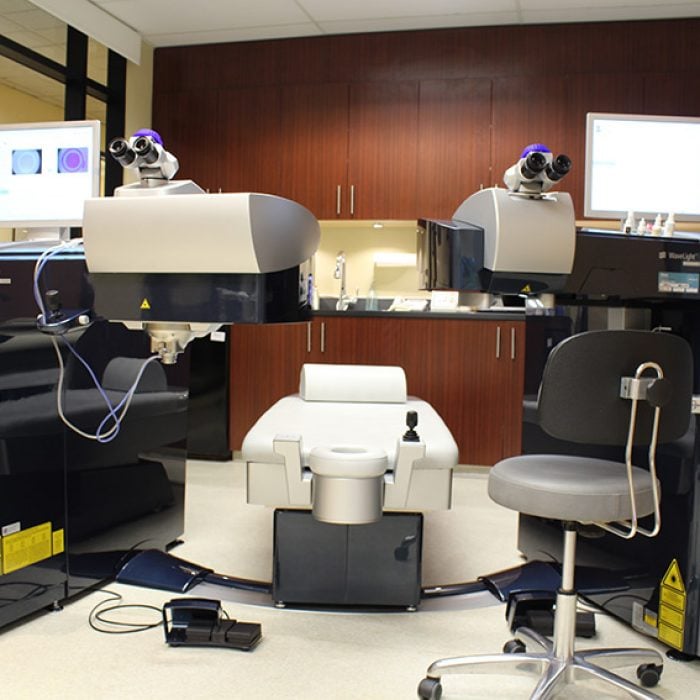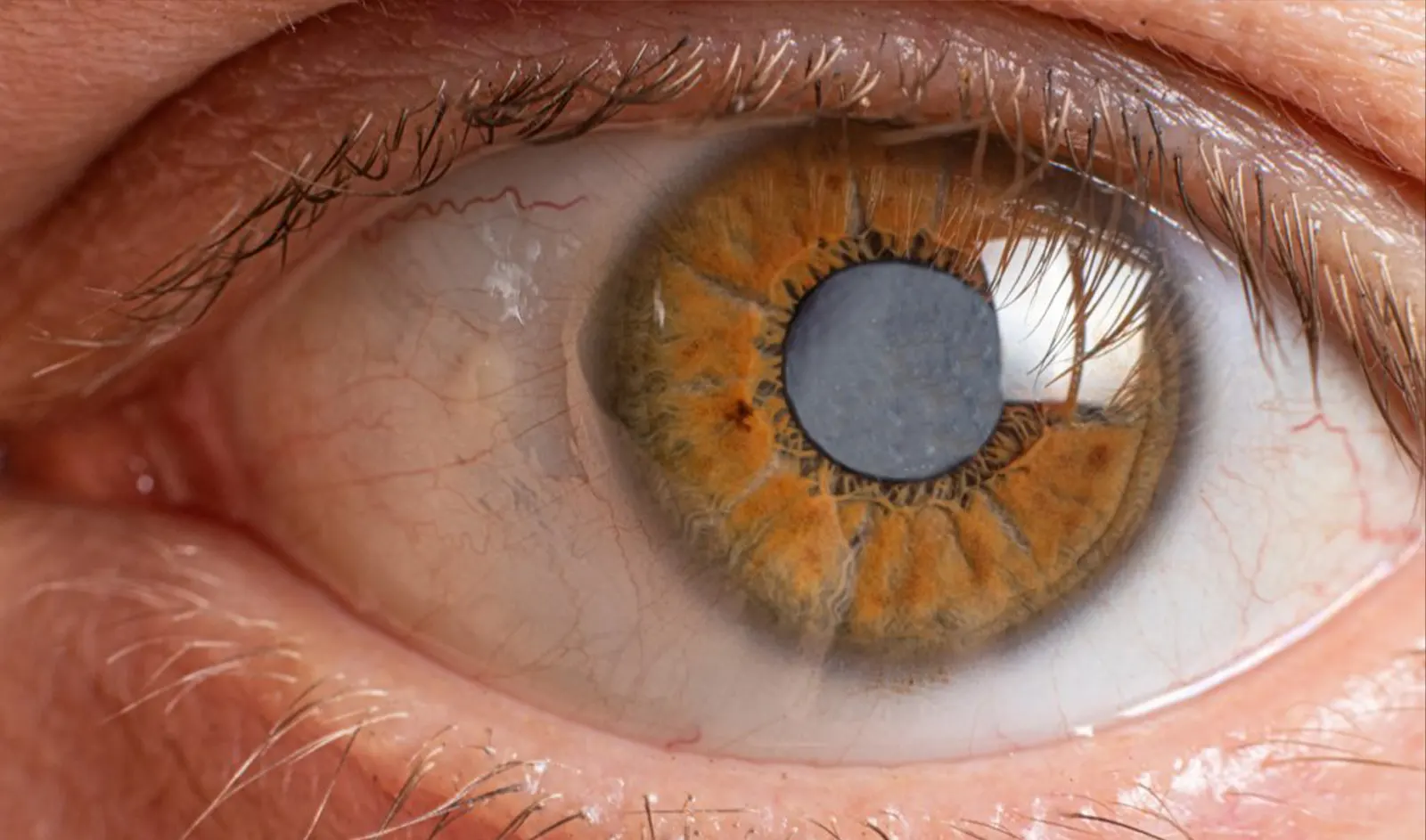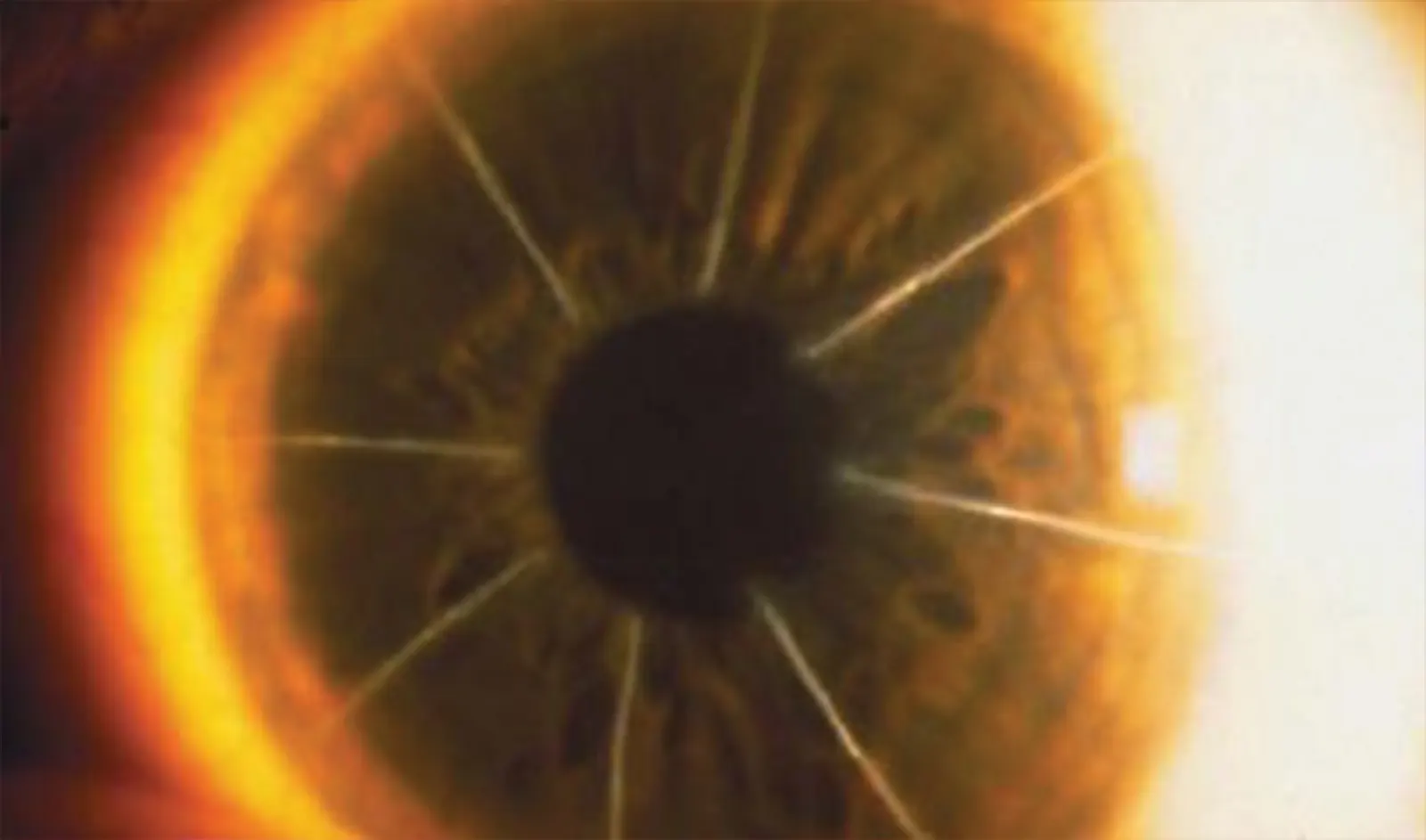The first step of any laser corneal re-shaping procedure is accessing the stroma or the main structural part of the cornea. The top layer is a clear skin layer, the epithelium. If you were to laser that epithelium, it would just grow back as any skin layer would. Therefore, you have to get under that layer to access the main “meat” part of the cornea, or the stromal bed. The epithelium can grow back, the stroma does not.
PRK: was the original procedure performed with a laser re-shaping, and is still used in certain cases today. In this procedure, the clear skin layer is removed, the laser re-shaping done, and it then takes several days for the clear skin layer to grow back. Because of the extra time to heal, and the additional discomfort PRK can cause, LASIK came into being.
LASIK: a procedure whereby a flap consisting of the epithelium and a thin layer of the upper stromal bed is created so the stromal bed can be accessed for laser re-shaping. This allows the epithelial layer to remain intact except at the edge of the flap and allows for the stroma to re-attach to itself after laser re-shaping. Over the years, it has been shown that it is most advantageous to create a thinner flap, thereby leaving more tissue in the bed to maintain the structure of the stroma and the cornea. It is also important to have a consistently thick flap, within a range that is predictable and does not vary by a large amount. Whether a femtosecond laser is used or a mechanical microkeratome is used, the goal is to get a consistent, reliable flap to maximize safety.
A minimum amount of stromal bed tissue must be left after laser re-shaping to maintain the structural integrity of the cornea. Therefore a reliable flap of thinner thickness is most advantageous so that the more stromal tissue can be left in the bed to ensure structural stability.
LASEK: A procedure where the epithelium is removed in one sheet after weakening with alcohol, and replaced after laser re-shaping is done. Supplanted by the more sophisticated Epi-LASIK procedure at Cornea Revolution.
Epi-LASIK (E-LASIK): A procedure where a flap of ONLY the epithelial layer is made, thereby maximizing the stromal bed available. This is similar to the PRK and LASEK procedure but creates an epithelial flap without use of chemicals. This flap is created with an automated device. This is a TRUE FLAPLESS PROCEDURE, as no irreplaceable stromal tissue is used to create the flap. This is used in special cases where it is a higher amount of stromal tissue is needed due to high prescription, where Epi-LASIK is deemed safer for the patient, or where the patient desires such a procedure. Dr. Motwani is the only surgeon in San Diego who has the equipment and performs this procedure.
Dr. Motwani uses two different methods and devices for making the flap. The first is the Alcon WaveLight FS200 femtosecond laser, part of the WaveLight Refractive Suite. This is a highly advanced, and rapid flap making laser that is designed to make highly customizable reliable thickness flaps.
The Refractive Suite has a bed that moves the patient in between the FS200 and the EX500 laser which does the refractive correction. The patient never has to move from the bed during the procedure. The FS200 is able to easily customize the flap for not only thickness but energy used, so it can make a flap with the least amount of energy needed thereby decreasing inflammation and speeding visual recovery.
The FS200 is extremely fast, making a flap in about 6 seconds, far faster than the Ziemer Femtosecond laser (which takes about 30-60 seconds) and the AMO Intralase IFS femtosecond laser. The FS200 has an automated suction system, unlike the IFS Intralase laser which uses a manual syringe (!). The FS200 has both video and microscope capabilities, allowing a surgeon full control over flap creation and visualizing it constantly unlike the Intralase which uses only video, and the Ziemer, which cannot visualize the flap creation while it is working.
Controls on the FS200 are much more advanced and information in planning the procedure is much more thoroughly presented on the FS200 to minimize errors in use. Surgical planning for the flap can be performed on the same Wavenet planning laptop stations that the Contoura planning is done on, so the surgeon can program the settings for the laser reshaping and the laser flap at the same time, and the information is linked through the Wavenet server for both procedures thereby customizing it for each patient, each procedure, and minimizing mistakes.
Dr. Motwani is certified on and has also used 2 different Ziemer Femtosecond lasers, and is certified on and has used the AMO Intralase IFS Femtosecond laser. His comparisons are from personal experience, and he strongly feels the FS200 is by far and away the most technologically advanced femtosecond laser he has ever used. It is in a completely different category than the Intralase IFS, which to Dr. Motwani feels is completely antiquated, while the Ziemer is still an excellent femtosecond device, but just slower than the FS200.
The second device used by Dr. Motwani is the Moria M2 Evolution System. This was the pinnacle of development of the blade microkeratome. A special source of blades that Dr. Motwani helped to develop is used to ensure reliable safe, reliable thickness flaps. Because the system only takes 1.5 seconds to make the flap, the entire procedure is done in under 10 seconds. Because no energy is put into the flap, the healing time is faster, with visual recovery usually starting almost immediately. At Cornea Revolution we want our patients to be fully informed. Although making reliable thickness flaps is important, how a flap is made makes no difference on the visual correction and how someone will ultimately see. The best laser devices minimize the laser energy to decrease swelling and allow for fast visual rehab. The Alcon WaveLight FS200 is without question one of the most sophisticated lasers in the world, and has wonderful results, but it still only makes a flap. It does not perform the laser re-shaping which is what really matters in laser vision correction.

The Moria system is also the device that can be used to an epithelial only flap for the procedure called Epi-LASIK. This is a highly advanced procedure only performed by a few surgeons in the United States that is utilized by Dr. Motwani for large corrections that do not have enough corneal tissue available to perform LASIK, and are too large a correction for PRK or LASEK.
Unfortunately, one of the most confusing marketing tactics that Lasik centers use is the description of how the flap is made. Somehow this becomes the focus of the Lasik procedure, when in reality how a flap is made has absolutely no impact on the visual outcome of the Lasik procedure. The most important aspect of making a flap is reliable flap thickness, which is important for safety. Otherwise, a flap is a flap is a flap as long as a device makes a consistent thickness flap.
Feel free to discuss during your consultation the merits of both ways of making the flap, or just let Dr. Motwani recommend which device is right for your particular case.

Cataract Surgery is the most performed surgical procedure in the United States, and has a phenomenal track record for improving…
Read More
The treatment of trauma with topographic-guided ablation depends on the level of scarring caused by the trauma, the position of…
Read More
In the dynamic world of eye care, keratoconus treatment has become a focal point due to the condition’s impact on…
Read More